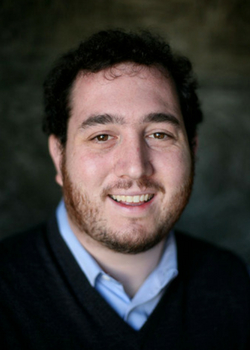It is often the case that the things that "everybody" knows to be true – aren't.
Marie Antoinette never said: "Let them eat cake." Vincent Van Gogh did not cut off his ear to impress a lover. And, despite what my well-meaning mother told me, swallowed gum doesn't sit in your stomach for seven years, and if you make a funny face there is absolutely no chance of it sticking that way.
There are lots of similarly popular myths about Jewish law:
One of the most widespread is that a Jew with a tattoo can't be buried in a Jewish cemetery. One memorable student once even emphatically argued with me that rabbis require that a tattoo be cut off before burial, presumably leaving many Jewish cadavers buried sans arms, legs, and the occasional rear end. This is all totally false. While Jewish law does prohibit tattooing, there is no source, ancient or modern, for the idea of excluding a tattooed Jew from proper burial. As Rabbi Alan Lucas, writing for the Conservative Movement's Committee on Jewish Law and Standards, notes: "However distasteful we may find the practice [of tattooing], there is no basis for restricting burial for a Jew who violates this prohibition… (Lucas, Tattooing and Body Piercing, 1997). Yet, the rumor persists (perhaps fed by other, well-meaning Jewish mothers… who can say?)
A much more damaging myth is the concept that a prospective convert must be turned away three times before being accepted for conversion. This ubiquitous idea is referenced everywhere from recent articles in the Washington Post and Haaretz to episodes of popular shows like Sex in the City and Orange is the New Black. Over the ten years I directed AJU's Miller Introduction to Judaism Program, I found that many of my students came to class fully expecting to be turned away. Others confessed they were terrified to reach out to potential sponsoring rabbis. Sadly, there are undoubtedly many more who never wound up beginning a Jewish journey at all out of fear of what they anticipated to be inevitable rejection.
The "turning away three times" idea originates from a collection of midrashim (rabbinic sermons or interpretations) called Ruth Rabbah. In this 6th century document, we find a quote from Rabbi Shmuel bar Nachmani who notes that Naomi, the mother-in-law of Ruth, urged her three times to return to her kin after the death of her husband. He states: "She says, 'turn back' three times, which corresponds to the three times one pushes off a convert" (Ruth Rabbah 2:16).
According to Jewish law, one does not need to turn a person away three times, or even once. All that is required is one straightforward question of intent, ensuring that a person understands what it means to throw in their lot with the Jewish People. If they answer with sincerity, they ought to be met with a loving embrace and a hearty welcome to the family.
On Shavuot, we read the Book of Ruth and pay respect to the spiritual courage it took her – and all her children after her – to take a leap into the unknown and discover a new path. But it is not enough to pay lip service to that courage. I have heard story after story from those on the path to conversion who are met with suspicion or outright rejection. Our community needs to take a hard look at itself and ask why "everyone knows" that we turn away converts three times, but too few people know that the actual law is to do the opposite.
At this profound moment of both crisis and opportunity in Jewish life, we must definitively bust this myth once and for all. Rabbi Shmuel's minority position was rejected by the Sages millennia ago. It is time for us to fully commit to do the same. The world is waiting.

